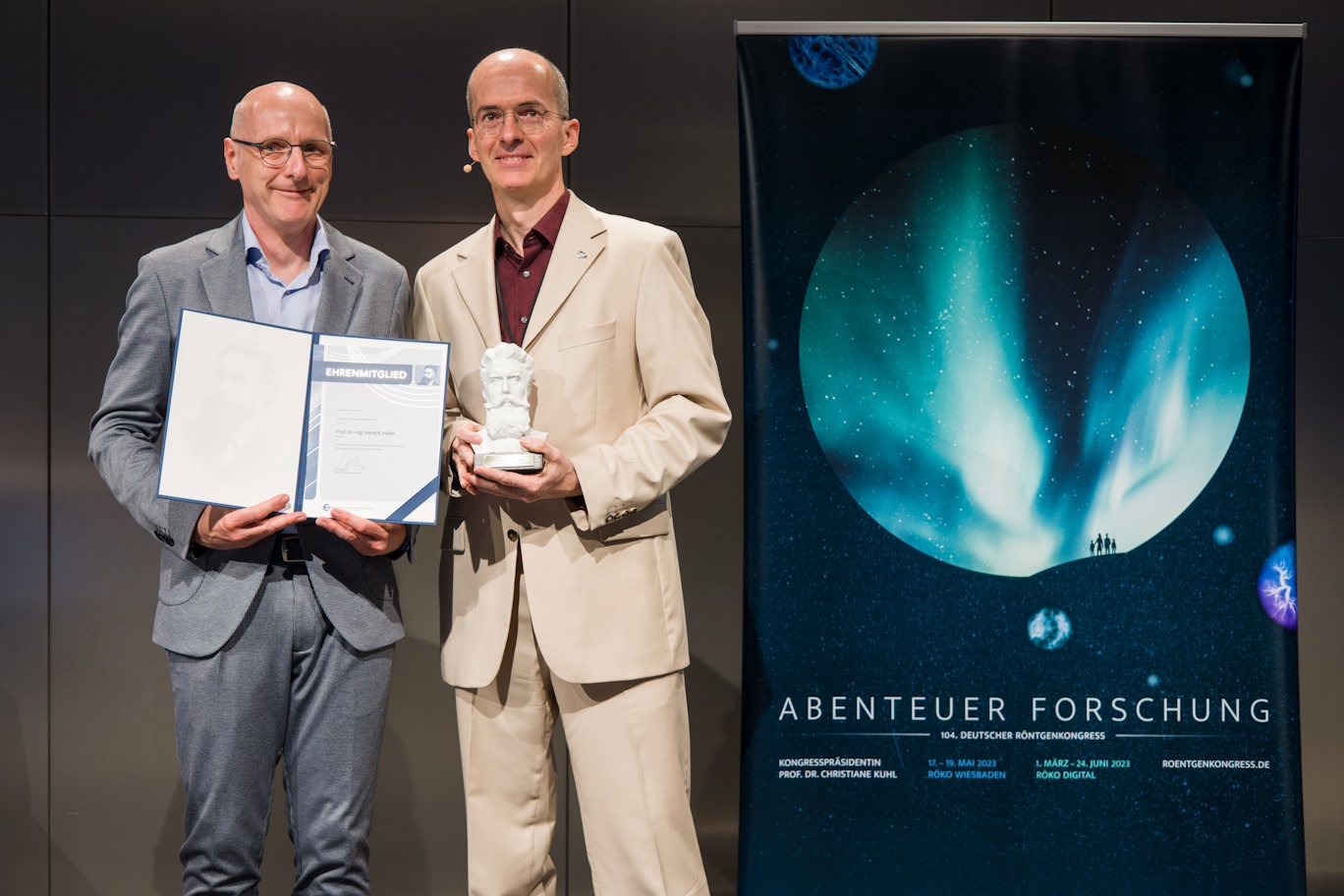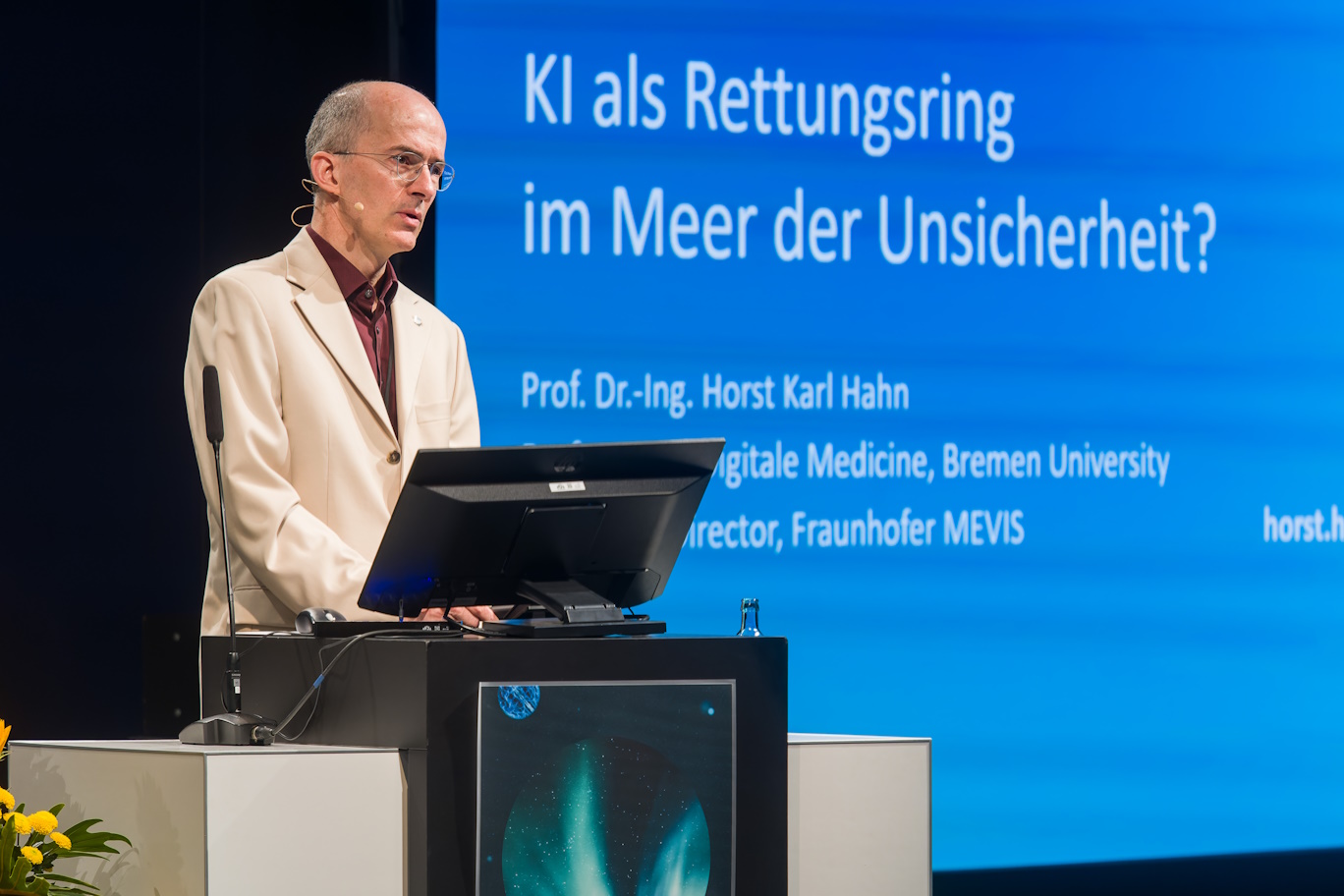Institute News


The Director of Fraunhofer MEVIS, Prof. Dr.-Ing. Horst Karl Hahn, was awarded the honorary membership in the German Radiological Society (DRG) on Friday, May 19, at this year's German Radiology Congress (Deutscher Röntgenkongress, RÖKO).
The honorary membership was conferred by Prof. Dr. med. Jörg Barkhausen, president of the DRG 2021-2023 and Director of the Department of Radiology and Nuclear Medicine at the Lübeck Campus of the University Hospital Schleswig-Holstein. In line with the overall theme “Science—an adventure”, the RÖKO 2023 focused on the possibilities and limits of the use of artificial intelligence (AI) in radiology. The in-person part of the conference opened on May 17 with the title event “Natural Intelligence versus Artificial Intelligence.”
On the occasion of the award, Horst Hahn gave a talk entitled “AI as a lifesaver in the sea of uncertainty?” in which he highlighted the limitations and opportunities of implementing AI that affect both humans and technology. He argued that more consistent management of sources of error on both sides will be indispensable for AI systems to make their much-needed contribution: namely, to increase safety, productivity, and quality in medicine simultaneously. Therefore, he said, key conditions that make locations attractive in the future are a positive error culture, strong transdisciplinary and international networks, and open, non-exclusive governance structures.
Horst Hahn is a physicist and Professor of Digital Medicine at the University of Bremen and has been working at the interface of medicine, physics, and computer science for over 25 years. His aim is the sustainable transformation of medical processes based on consistent data integration, robust quantitative modeling, and interactive machine learning and AI methods.
Next to Horst Hahn, further scientists from Fraunhofer MEVIS were present at RÖKO 2023, with contributions on applications of AI in radiological research. Among them Dr. Bianca Lassen-Schmidt who gave one of four short technical presentations on the multicenter radiological research network RACOON, which represents medical imaging in the nationwide Network University Medicine (NUM) funded by the German Federal Ministry of Education and Research. RACOON involves the radiology departments of all 38 German university hospitals and five technical partners and analyzes radiological image data. Through structured reporting, RACOON makes these data useable for joint research on digital predictive biomarkers and the coordinated use of AI.
The German Radiological Society (DRG) was founded in 1905, just ten years after W. C. Röntgen’s groundbreaking discovery of X-rays. Since then, the DRG has been dedicated to the advancement of radiology in general and hosting the annual German Radiology Congress. At this largest German medical imaging conference, 7000 people attend training workshops and discuss the latest scientific findings and their impact on and application in everyday medical practice, both on-site and at the RÖKO online. Representing the interests of those active in medical imaging, the DRG furthermore plays an important role in the shaping of future requirements for radiology and imaging deriving from, e.g., digitization, demographic change, or health policy conditions.
Links
German Radiological Society (in German)
 Fraunhofer Institute for Digital Medicine MEVIS
Fraunhofer Institute for Digital Medicine MEVIS